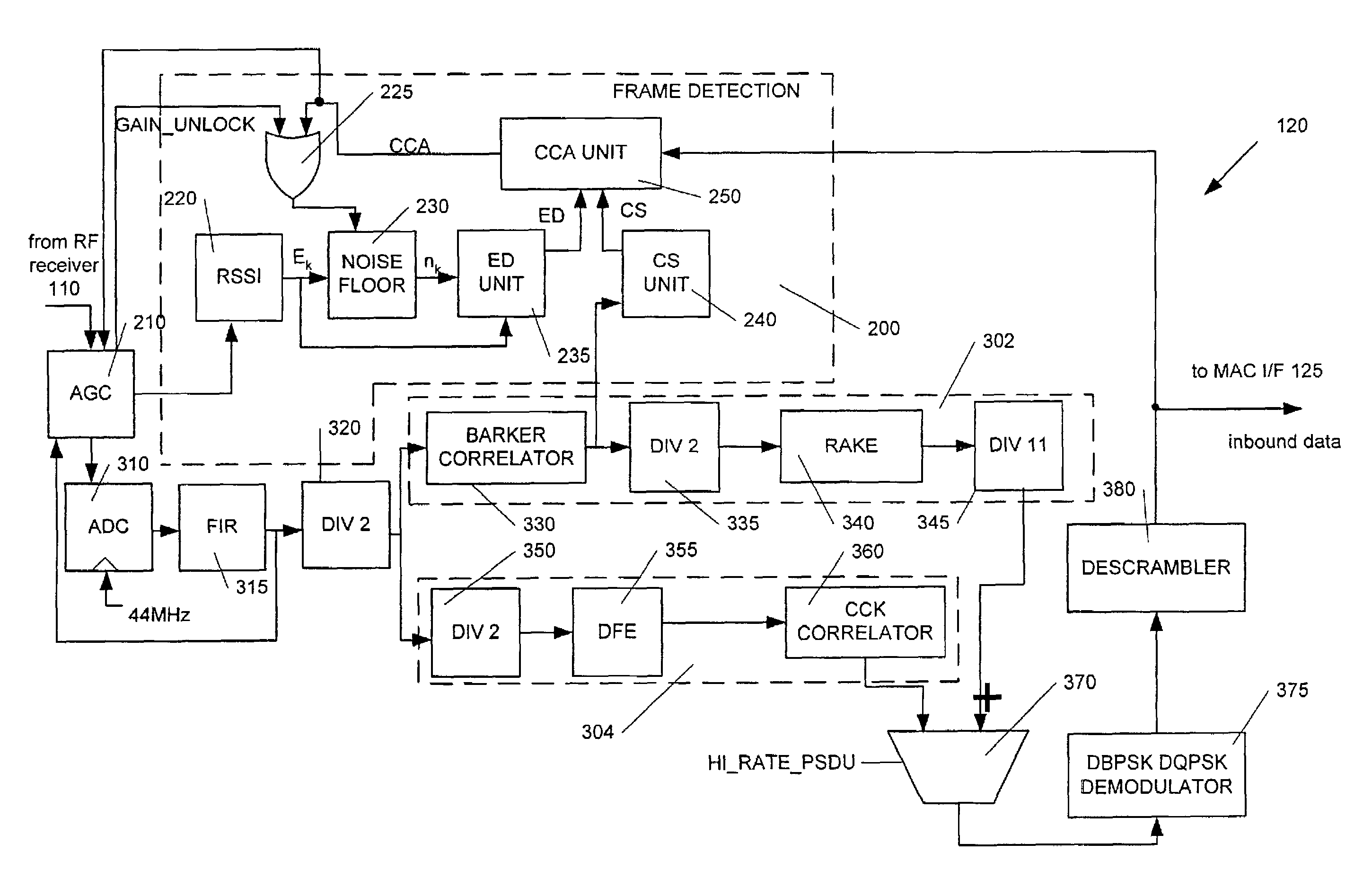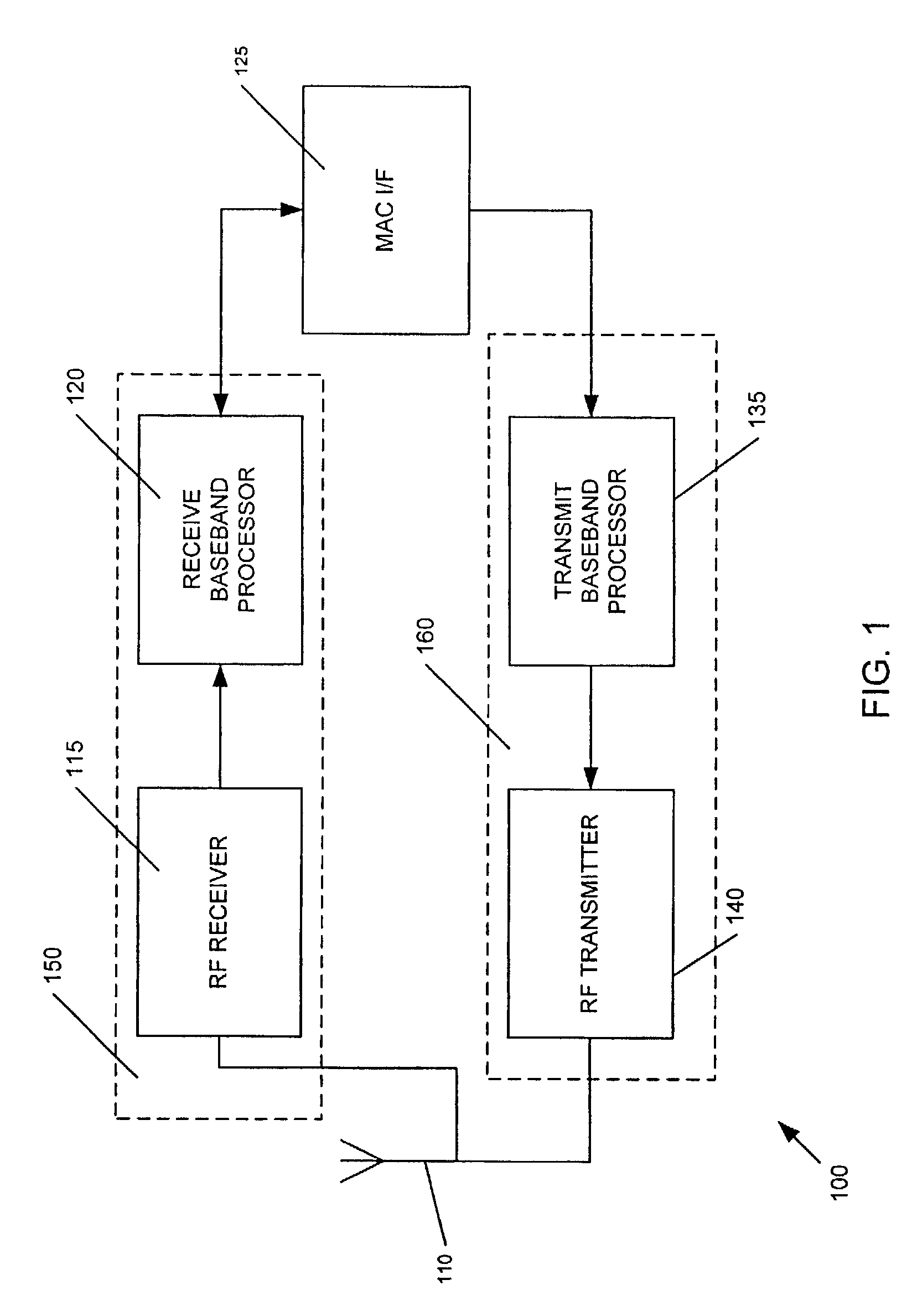Clear channel assessment in wireless communications
a wireless communication and clear channel technology, applied in the field of wireless communications, can solve the problems of low effective data throughput, transmission delay, and low accuracy of known techniques
- Summary
- Abstract
- Description
- Claims
- Application Information
AI Technical Summary
Benefits of technology
Problems solved by technology
Method used
Image
Examples
Embodiment Construction
[0029]Turning now to the figures, FIG. 1 illustrates a wireless communications transceiver 100 according to an embodiment of the invention. In this embodiment, inbound RF signals potentially conveying an 802.11 or 802.11b compliant PLCP frame are picked up by the duplex antenna 10 and routed to the RF receiver unit 115 of a receiver 150 arranged in a manner consistent with the present invention. The RF receiver unit 115 performs routine downconversion and automatic gain control of the inbound RF signals, and presents an analog baseband signal containing the aforementioned 802.11b PLCP frame to the receive baseband processor 120. The functions of the receive baseband processor 120 will be detailed below with reference to FIG. 2, including packet detection and channel busy consistent with the present invention, along with conventional symbol correlation and / or demodulation of the preamble, header and payload portions of each inbound 802.11b PLCP frame to recover bitstream data for rec...
PUM
 Login to View More
Login to View More Abstract
Description
Claims
Application Information
 Login to View More
Login to View More - R&D
- Intellectual Property
- Life Sciences
- Materials
- Tech Scout
- Unparalleled Data Quality
- Higher Quality Content
- 60% Fewer Hallucinations
Browse by: Latest US Patents, China's latest patents, Technical Efficacy Thesaurus, Application Domain, Technology Topic, Popular Technical Reports.
© 2025 PatSnap. All rights reserved.Legal|Privacy policy|Modern Slavery Act Transparency Statement|Sitemap|About US| Contact US: help@patsnap.com



